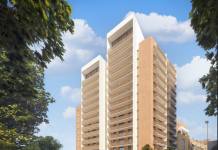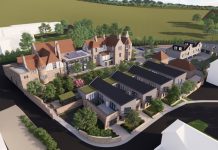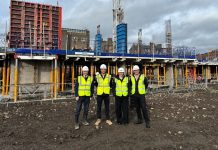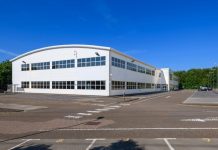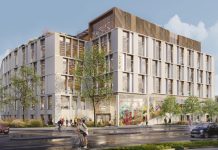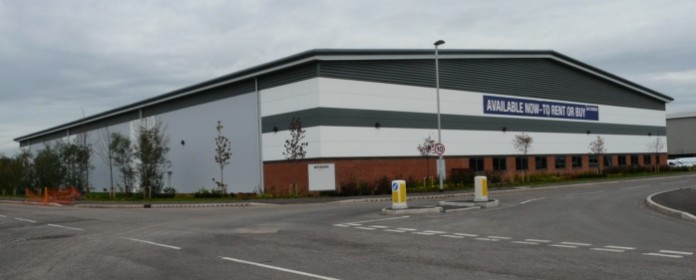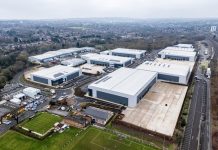With some interesting economic news and considerable political upheaval it was great to see some positive news with a major national occupier choosing Newport as its preferred location, says Haydn Thomas of Newport-based Hutchings & Thomas Chartered Surveyors.
Amazon have taken the speculatively built, 48,255 sq ft warehouse industrial unit at the 100-acre Celtic Business Park development in Newport.
The Park is located to the south east of the city of Newport and forms part of the former Llanwern Steelworks site which is being re-generated by St Modwen with 4,000 residential units proposed along with planning for 1.25 million sq ft (116,128 m²) of warehouse and production space (B1, B2 and B8 uses).
The proposed development will provide industrial and commercial units from 20,000 sq ft upwards and are available on a pre-let or pre-sale basis.
The subject unit which has been taken by Amazon will create 50 new, direct, jobs along with potentially double that number of jobs created for delivery drivers and linked businesses.
The letting raises the million dollar question of whether the existence of the unit placed Newport in the forefront of Amazon’s considerations or whether Amazon had seen Newport as its best and only location?
In recent times, effectively since the 2008 economic down turn, little or no development of any significance has happened in South Wales generally especially in relation to warehouse and production space.
It is commonly known throughout the surveying world that any well located units between 5,000 and 15,000 sq ft are usually “snapped up” on a leasehold or freehold basis. Although freeholds are available demand for such is extremely high. Although this is an experience mainly felt along the M4 corridor with the shortage of supply, businesses are now looking further afield i.e. further west or towards the Heads of the Valleys Road.
The last major development of industrial warehouse buildings was through the Welsh Development Agency in the 1980’s and 1990’s and it is these buildings which we are finding are letting or selling well in the current climate.
When you drill down into the reasons for the shortage in supply it is fairly obvious that with build costs remaining high and rents and capital values, although on the increase, remaining fairly low (in comparison to pre 2008 levels), developers are somewhat resistant to build any speculative units especially in areas which are seen as somewhat marginal.
The issue that the surveying world has identified is the inflationary nature of the current market place with the obvious time lag in development, thus supply, of industrial units and the short term increase in demand leading to an increase in capital values and rents.
Although these increases will, through the market place, lead to more development of warehouse and industrial units the interim period may cause a lack of investment by firms looking to locate into the south east Wales region.
With the UK looking to exit the European Union in the next few years this may temper demand somewhat although, we are finding, owner occupier demand is still driving the market strongly especially with companies acquiring units through their pension schemes.
The issues of the lack of supply may need to be addressed through government policies and this may be by direct approach i.e. the formation of a “WDA” type body to possibly develop new units or by incentives such as grant assistance/subsidies or void rate assistance to developers to encourage development in certain areas or even generally.
It is imperative that these issues are dealt with now rather than at a later stage when investment in the South Wales area may have been lost to other parts of the UK or even existing companies in the areas being hamstrung by lack of available facilities to expand or grow their business and having to move elsewhere.
With the improvement in infrastructure proposed in the region it is probably time to create new development zones and zoning more land for industrial estate development, so that modern units can be produced to satisfy occupier demand into the next few decades.
It is a sad indictment of the commercial market that units developed in the 1980’s and 1990’s are still generally, the most modern units available on the market with no end in sight to the disparity between demand and supply.
Hopefully St Modwen, on the back of the Amazon letting ,will feel confident enough in the region to develop more units on the site however this will need to be replicated across South Wales to assist the economic fortunes of the region as a whole.

